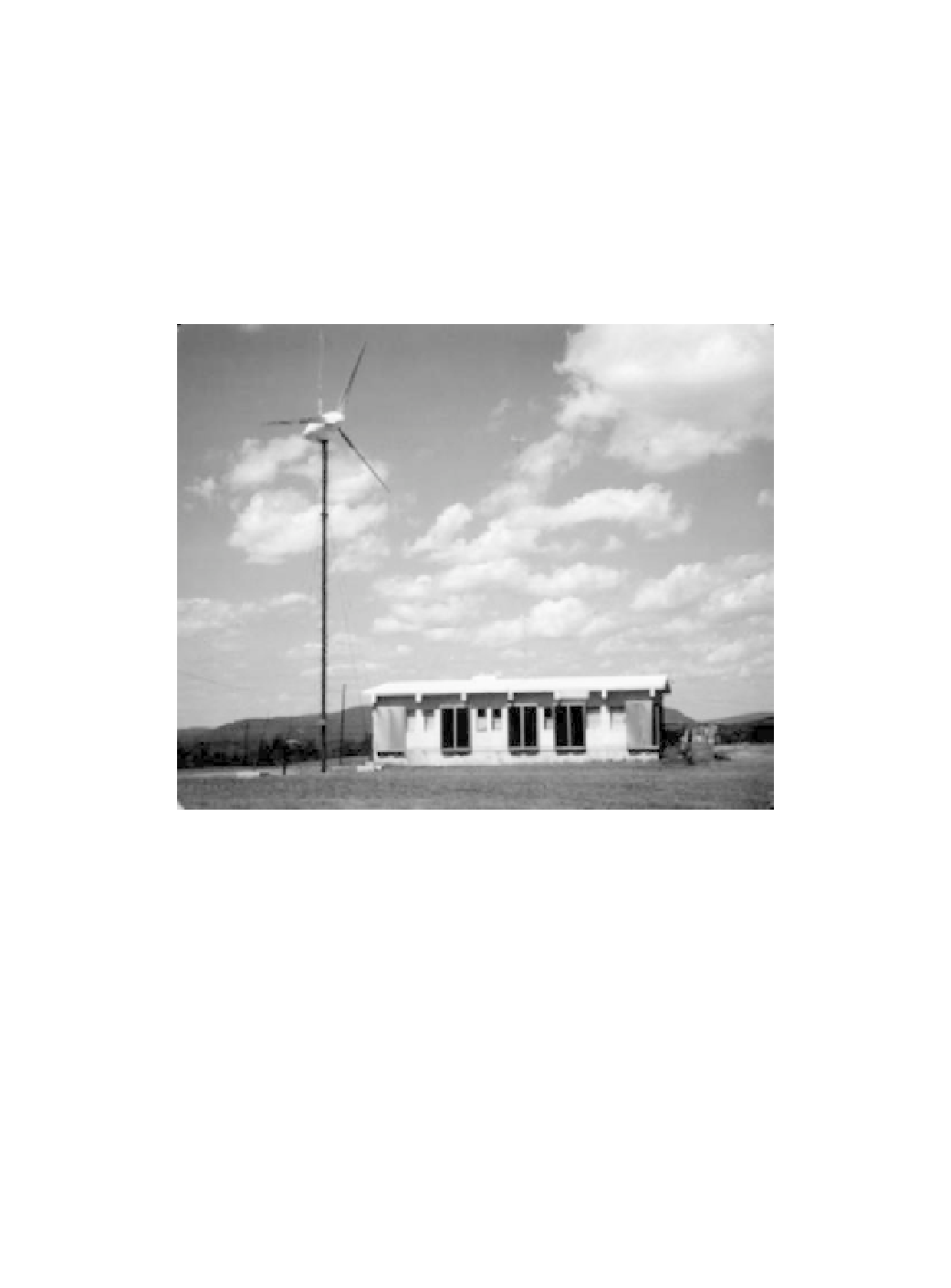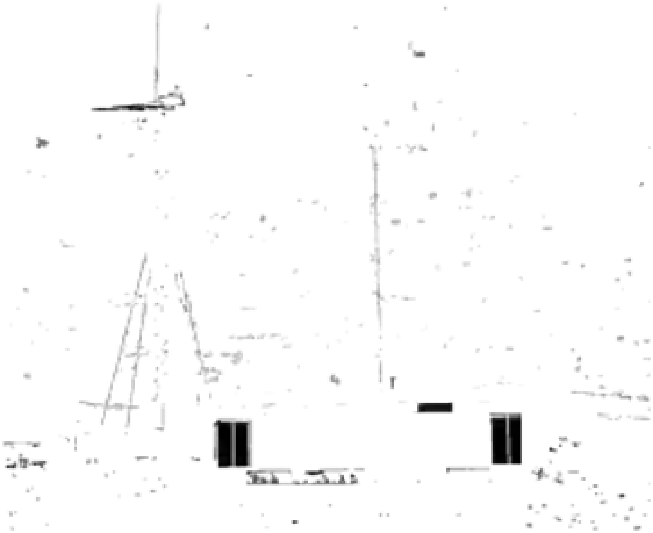Environmental Engineering Reference
In-Depth Information
The WF-1 was paired up with a building known as the Solar
Habitat, located on the UMass Amherst campus (Fig. 24.2). This
facility was designed to demonstrate that a number of energy
efficient building practices, such as solar hot water heaters, could be
incorporated into a popular housing style, the ranch house. The WF-
1 successfully demonstrated that wind heating could work, but the
concept of a “wind furnace” never caught on. Relative to grid quality
electricity, space heating was not economical, and subsequent
technological advances and regulatory changes favoured the direct
production of electricity from wind power.
Figure 24.2
The WF-1 and the Solar Habitat at UMass, 1976.
Many of the students who worked on WF-1 went on to work for
major wind turbine manufacturers in the United States when the
industry was just beginning. At least three students who worked
on the WF-1 took jobs with US Windpower very early on. Later
on others joined Northern Power Systems, Hamilton Standard,
Kenetech, Zond, Carter, Fayette, Enron Wind, to name just a few.
Two of the original WF-1 students were principals of ESI, a one-time
major manufacturer of wind turbines. Many veterans of the WF-1
project still work in the wind energy industry, such as at GE Wind,


Search WWH ::

Custom Search